Digital Poster
Psychiatry: Functional Connectivity
ISMRM & ISMRT Annual Meeting & Exhibition • 10-15 May 2025 • Honolulu, Hawai'i

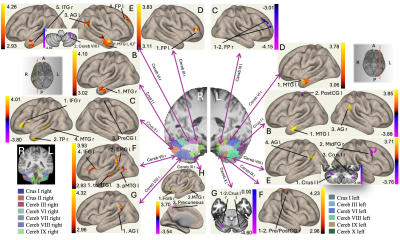 |
Computer Number: 65
2484. Aberrant
Intra-Cerebellar and Cerebro-Cerebellar Functional Connectivity
in Early Schizophrenia Spectrum Disorder
Z. Ben Youss, Y. V. Sui, R. Flaherty, G. Schur, H. Bertisch,
D. Goff, M. Lazar
Bernard and Irene Schwartz Center for Biomedical Imaging, New York, United States
Impact: Elucidating
the cerebellum's role in early-stage SSD can inform our
understanding of the disorder’s pathology. Pinpointing
intra- and cerebro-cerebellar FC abnormalities may shed
light on the cerebellum impact on cognitive impairments in
early-stage SSD, potentially improving diagnosis and
treatment strategies.
|
|
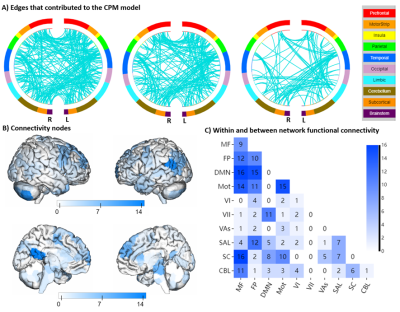 |
Computer Number: 66
2485. Neural
fingerprints of negative symptoms in schizophrenia identified by
connectome-based modeling
Z. Gao, Y. Xiao, Q. Gong, S. Lui
West China Hospital of Sichuan University, Chengdu, China
Impact: Our findings provide fundamental insights into
the neurobiological underpinnings of negative symptoms in
schizophrenia, and the established brain-symptom models have
the potential to further translate into clinical
applications as targets for precise intervention such as
brain stimulation.
|
|
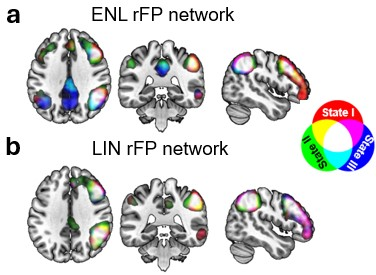 |
Computer Number: 67
2486. Spatially
dynamic nonlinear fMRI network analysis: application to
schizophrenia
S. Kinsey, V. Calhoun, A. Iraji
Center for Translational Research in Neuroimaging and Data Science (TReNDS), Atlanta, United States
Impact: Explicitly nonlinear fMRI networks reflect a
higher degree of dynamic integration and segregation over
time relative to linear networks. Moreover, the dynamic
profiles of explicitly nonlinear networks reflect hidden
differences between individuals with schizophrenia and
controls.
|
|
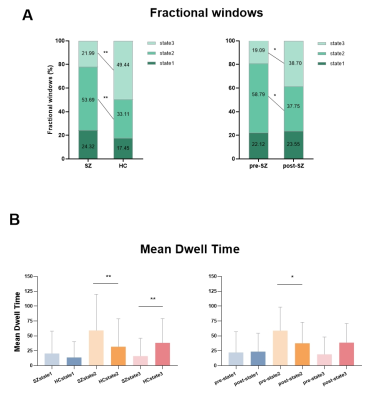 |
Computer Number: 68
2487. Dynamic
Functional Connectivity and Coupling Analysis of Triple Networks
and White Matter Functional Networks in First-Episode
Schizophrenia
X. Wu, Y. Xi, H. Yin
Xi'an People's Hospital (Xi'an Fourth Hospital), Xi'an, China
Impact: These findings highlight the importance of
dynamic FC and functional coupling between the triple
network and white matter in the pathogenesis of
schizophrenia, which may aid in a better comprehension of
the dynamic changes within the disease networks.
|
|
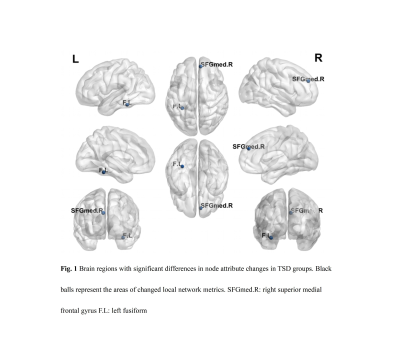 |
Computer Number: 69
2488. Total
Sleep Deprivation Alters Brain Network Topology in Medical
Staff: A Resting-State fMRI Study
C. Peng, D. Guo, L. Liu, L. Nie, Z. Zeng, H. Yang
Chongqing Hospital of Traditional Chinese Medicine, chongqing, China
Impact: By identifying key brain network nodes affected
by total sleep deprivation, this study provides insights
into neural adaptations under sleep deprivation, offering a
foundation for developing targeted interventions to mitigate
its cognitive and health impacts.
|
|
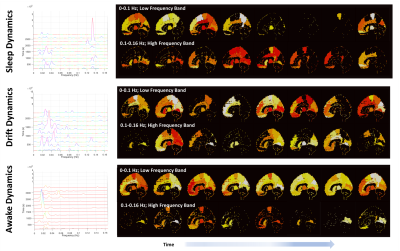 |
Computer Number: 70
2489. Sleeping
Under the Looping Star: Identifying BOLD Spectral Correlates of
Sleep with Silent fMRI.
N. Abad, I. Jansen, A. Ajala, T. Foo, A. Sanchez, F.
Wiesinger, B. Fernandez, A. Pollatou, K. DeMarco, G. Khols,
H. D. Morris, V. Ho, M. Jeong, M. Boly, R. Birn, K. Werner,
L. Marinelli
GE HealthCare, Technology & Innovation Center, Niskayuna, United States
Impact: Due to difficulty of simultaneous EEG-fMRI and
the acoustic footprint, our understanding of sleep remains
limited. Using the silent Looping Star we report sleep,
drift and awake-brain hemodynamic activity. Signatures
correlate with slow-wave and spindle activity previously
reported with EEG-fMRI.
|
|
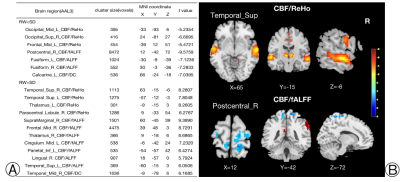 |
Computer Number: 71
2490. Neurovascular
Coupling Mechanisms Underlying Spatial Working Memory
Alternations in Healthy Males Following 24 Hours of Sleep
Deprivation
l. xu, j. zhang
Department of Magnetic Resonance, Lanzhou University Second Hospital, Lanzhou, China, lanzhou, China
Impact: It is widely acknowledged that SD has adverse
effects on memory. Changes in NVC in specific brain regions
after SD suggest possible cause for SWM impairment,
providing direction for further exploration into the
detailed neural mechanisms of SD-induced SWM damage.
|
|
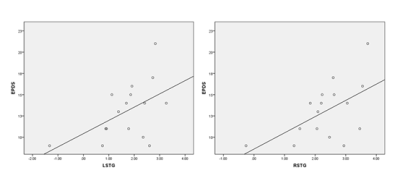 |
Computer Number: 72
2491. Neurophysiological
mechanisms in Women at risk for postpartum depression responding
to baby emotional sounds
W. Su, X. Yue, F. Gao, Y. Gao, Q. Zhang, X. Li, S. Zhao, L.
Lin, K. Zhang
School of Psychology, Shandong Normal University, Jinan, China
Impact: This may help to explain the neurophysiological
mechanisms of emotional processing in women with postpartum
depression and provide a new theoretical basis for enhanced
care of newborn babies.
|
|
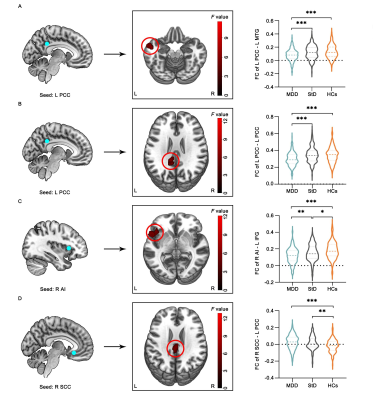 |
Computer Number: 73
2492. Shared
and Distinct Alterations in Brain Connectivity and Cognitive
Function in Subthreshold and Major Depression
X. Tang, P. Chen, S. Zhong, G. Chen, R. Chen, W. Cui, Y.
Wang
First Affiliated Hospital of Jinan University, Guangzhou, China, Guangzhou, China
Impact: Abnormal SN/AN connectivity may cause depressive
symptoms in StD/MDD. Altered DMN FC may trigger disease
onset. StD first shows social cognition deficit linked to
SN.
|
|
|
Computer Number:
2493. WITHDRAWN |
||
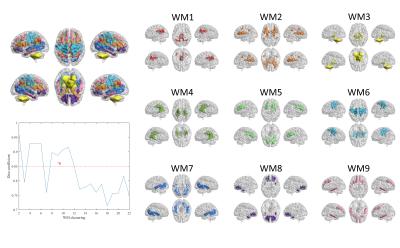 |
Computer Number: 74
2494. Abnormal
frequency-specific white matter functional interactions in
drug-naïve first-episode major depressive disorder patients
Q. Guo, S. Cai, H. Yang
Zhejiang University , Hangzhou, China
Impact:
Exploring frequency-specific alterations in white-matter function by applying functional covariance connectivity method expands the boundaries of brain function research in depression, the discovery of relevant biomarkers may open new avenues for its diagnosis and treatment that could benefit patients. |
|
 |
Computer Number: 75
2495. Intrinsic
connectivity disorganization of anterior cingulate cortex
functional subdivisions in major depressive disorder
Z. Zhou, L. Zhang, X. Hu, L. Cao, W. Bao, Y. Gao, H. Li, H.
Sun, Q. Gong, X. Huang
Huaxi MR Research Center (HMRRC), Functional and Molecular lmaging Key Laboratory of Sichuan Province, West China Hospital, Sichuan University, Chengdu, China
Impact: Our discovery of differentiated connectivity
architectures of CBP-derived ventral-dorsal ACC functional
bipartitions in MDD, with a ventral ACC-based
hypoconnectivity related with core depressed symptoms while
a dorsal ACC-based hyperconnectivity linked to maladaptive
behaviors, could potentially guide more precise targeted
interventions.
|
|
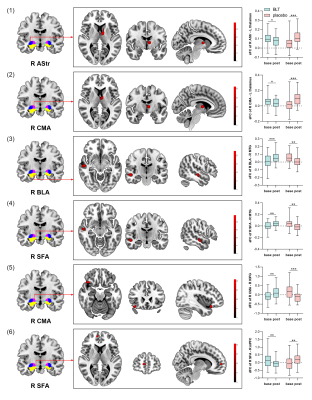 |
Computer Number: 76
2496. Effects
of light therapy on amygdala connectivity and serotoninergic
system in young adults with subthreshold depression
P. Chen, G. Chen, Z. Qi, W. Cui, Y. Wang
The First Affiliated Hospital of Jinan University, Guangzhou, China
Impact: Correlations between FC changes of the amygdala
subregions and the serotoninergic system activity after BLT
may underline the antidepressant mechanisms of BLT.
Combining baseline static and dynamic FC of the amygdala may
assess the effectiveness of BLT in treating StD.
|
|
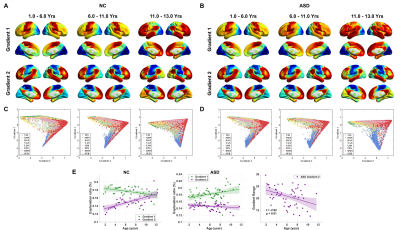 |
Computer Number: 77
2497. Abnormal
Functional Hierarchy Development During Childhood in Autism
Y. Zhang, J. Feng, F. Li, M. Cao
Institute of Science and Technology for Brain-Inspired Intelligence, Fudan University, Shanghai, China
Impact: This study revealed abnormal developmental
patterns of the functional hierarchy of the brain in
children with autism. Our findings provide new evidence for
an imbalance in the functional hierarchy in autism.
|
|
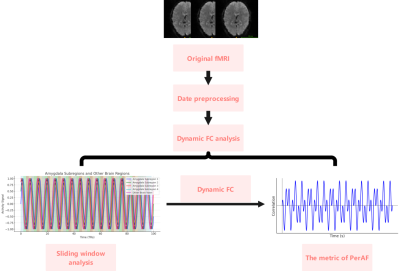 |
Computer Number: 78
2498. Sex
Differences in Dynamic Functional Connectivity of Amygdala
Subregions in Children and Adolescents with Autism Spectrum
Disorder
j. Zheng, K. Li, C. Yu, M. Wang, X. Zhang, y. Bai, M. Wang
Xinxiang Medical University Henan Provincial People's Hospital, Zhengzhou, China
Impact: This research highlights the importance of
considering sex differences in ASD, revealing that increased
dFC variability in males may be linked to their specific
social and emotional challenges, thereby informing targeted
interventions and enhancing our understanding of ASD's
neurobiological mechanisms.
|
|
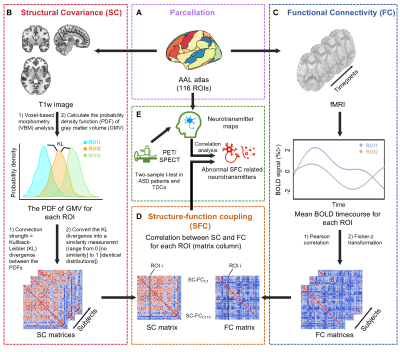 |
Computer Number: 79
2499. Structure-function
coupling changes and associated neurotransmitter systems in
high-functioning ASD patients
B. Gu, H. Gao, R. Qian, X. Pang, D. Wu, Z. Zhao
Zhejiang University, Hangzhou, China
Impact: Our findings suggested structure-function
uncoupling in high-function ASD, which was associated with
patients’ communication dysfunction and specific
neurotransmitters. This may offer a new perspective on
elucidating the underlying neurobiological mechanisms of the
dysfunctions in ASD.
|
The International Society for Magnetic Resonance in Medicine is accredited by the Accreditation Council for Continuing Medical Education to provide continuing medical education for physicians.